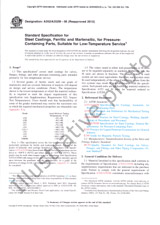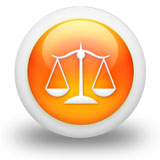We need your consent to use the individual data so that you can see information about your interests, among other things. Click "OK" to give your consent.
ASTM D4730-13(2020)
Standard Specification for Flooding Compounds for Telecommunications Wire and Cable
Translate name
STANDARD published on 1.8.2020
The information about the standard:
Designation standards: ASTM D4730-13(2020)
Publication date standards: 1.8.2020
SKU: NS-1004164
The number of pages: 3
Approximate weight : 9 g (0.02 lbs)
Country: American technical standard
Category: Technical standards ASTM
The category - similar standards:
Annotation of standard text ASTM D4730-13(2020) :
This specification covers a variety of compounds used for flooding the shields and armors of telecommunications wires and cables (both electrical and fiber optic) for the purpose of preventing water and other undesirable fluids from entering or migrating along or through the cable sheath. The material may be of any chemical composition suitable for the intended purpose and should meet the requirements specified. The flooding compound shall display adhesive properties to provide adhesion between metallic sheath elements and the outer jacket materials of wire and cable. All flooding compounds manufactured in conformance to this specification shall meet the following requirements: homogeneity and foreign material.
Keywords:
adhesive, compatibility, flooding compound, moisture barrier, telecommunications wire and cable ,, ICS Number Code 33.120.10 (Coaxial cables. Waveguides)
Additional information
| 1. Scope | ||||||||||||||||||||
|
1.1 This specification covers a variety of compounds used for flooding the shields and armors of telecommunications wires and cables (both electrical and fiber optic) for the purpose of preventing water and other undesirable fluids from entering or migrating along or through the cable sheath. (For related standards see Specifications D4731 and D4732.) 1.2 This international standard was developed in accordance with internationally recognized principles on standardization established in the Decision on Principles for the Development of International Standards, Guides and Recommendations issued by the World Trade Organization Technical Barriers to Trade (TBT) Committee. |
||||||||||||||||||||
| 2. Referenced Documents | ||||||||||||||||||||
|
We recommend:
Updating of laws
Do you want to be sure about the validity of used regulations?
We offer you a solution so that you could use valid and updated legislative regulations.
Would you like to get more information? Look at this page.




 Cookies
Cookies
